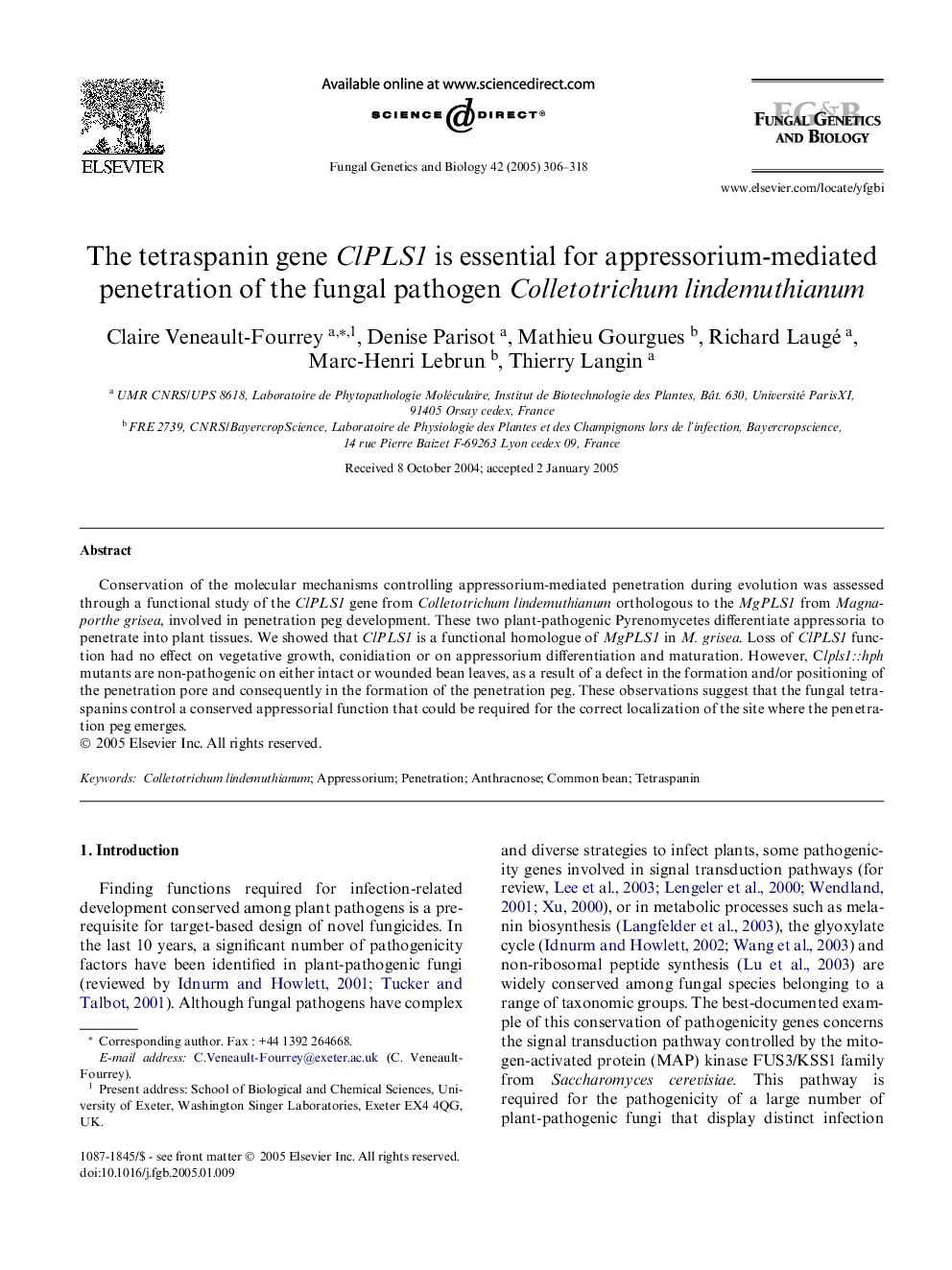| Article ID | Journal | Published Year | Pages | File Type |
|---|---|---|---|---|
| 10939698 | Fungal Genetics and Biology | 2005 | 13 Pages |
Abstract
Conservation of the molecular mechanisms controlling appressorium-mediated penetration during evolution was assessed through a functional study of the ClPLS1 gene from Colletotrichum lindemuthianum orthologous to the MgPLS1 from Magnaporthe grisea, involved in penetration peg development. These two plant-pathogenic Pyrenomycetes differentiate appressoria to penetrate into plant tissues. We showed that ClPLS1 is a functional homologue of MgPLS1 in M. grisea. Loss of ClPLS1 function had no effect on vegetative growth, conidiation or on appressorium differentiation and maturation. However, Clpls1::hph mutants are non-pathogenic on either intact or wounded bean leaves, as a result of a defect in the formation and/or positioning of the penetration pore and consequently in the formation of the penetration peg. These observations suggest that the fungal tetraspanins control a conserved appressorial function that could be required for the correct localization of the site where the penetration peg emerges.
Related Topics
Life Sciences
Biochemistry, Genetics and Molecular Biology
Cell Biology
Authors
Claire Veneault-Fourrey, Denise Parisot, Mathieu Gourgues, Richard Laugé, Marc-Henri Lebrun, Thierry Langin,
